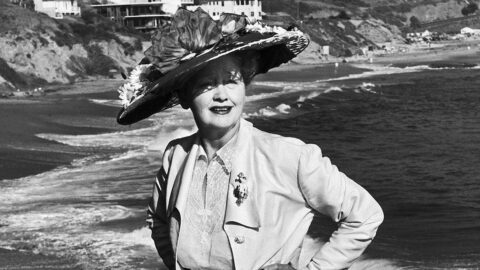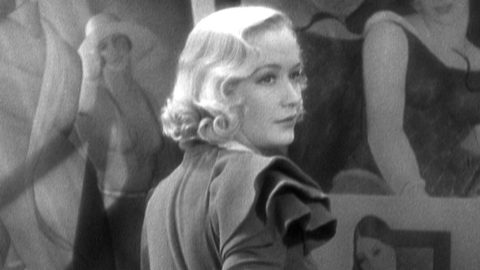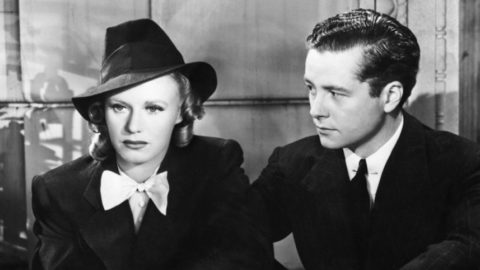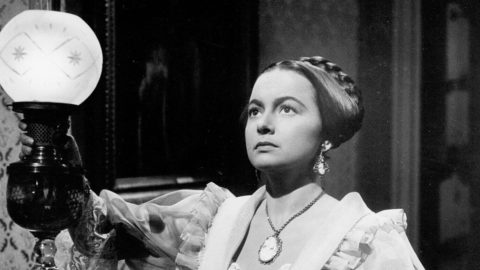TCM Diary: Bernard Robinson, Hammer Horror Designer
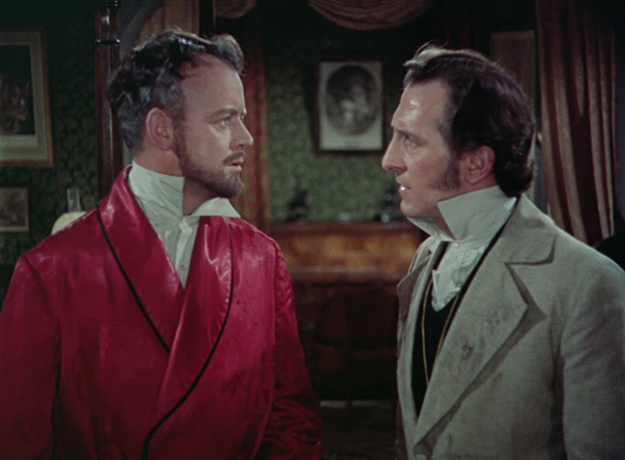
The Curse of Frankenstein
Fall is my favorite season (isn’t it everyone’s?) and the horror films of Hammer Studios are among the most autumnal ever made. Every time characters walk outside or ride in a carriage, on their way to investigate, to rescue, flee or pursue—no one is ever just out for a walk or a drive in a Hammer movie—the wheels send dead leaves flying and half-bare branches curl toward the road like fingers. The travelers clutch their wraps and look up at menacing, usually gray skies.
And when they arrive, what should greet them, but the sets of Bernard Robinson. This October finds TCM running an extensive series dedicated to the career of the late Christopher Lee, who spent many years at Hammer, biting necks as Dracula, menacing blind grandfathers and scheming housemaids in The Curse of Frankenstein and, every once in a while, playing a human, as in The Hound of the Baskervilles and The Devil Rides Out. To me, the most essential component of a horror film is atmosphere, and from 1957’s Curse of Frankenstein on, that was what Robinson’s production design kept giving Christopher Lee and Hammer films, again and again. According to author Laurie N. Ede, in her British Film Design: A History, not only Lee but also co-star Peter Cushing, producer Anthony Hinds, and screenwriter Jimmy Sangster “considered Robinson to be the real star at Bray [Studios].” Why they thought so is apparent even in two of Robinson’s earliest films with Hammer, The Curse of Frankenstein and The Horror of Dracula.
Robinson joined Hammer in 1956, believing at the time that it was something of a comedown after having his name on the credits of aviation drama Reach for the Sky. Ede says that up to his death in 1970, Robinson cited 1958 spy drama Carve Her Name With Pride as his best work. But he brought tremendous style to his Hammer designs, drawing pencil and ink sketches that teemed with detail, working closely with art director Douglas Mingaye, and filling the sets with props.
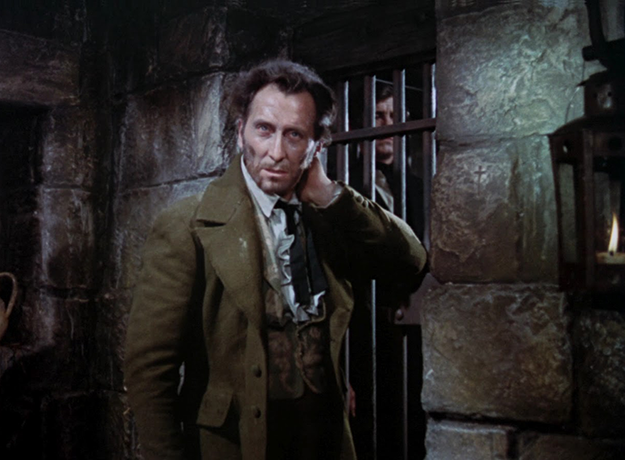
The Curse of Frankenstein
Hammer was a famously stingy studio, dressing and re-dressing the same facilities at Bray Studios. But like a poet writing a sonnet sequence, Robinson could ring changes on the same structures again and again. Today Hammer fans gather on chat boards and make a game out of spotting where Robinson created a new scene by redressing the same set, sometimes even within the same film, such as a stone staircase in Horror of Dracula that gets quite a workout.
Hammer rooms were often small and cramped, with far smaller means of egress than you might want when fleeing a monster. A mix of aged, grayed-out wood and stone make Victor Frankenstein’s manor or Dracula’s castle look appropriately ancient. Small casement windows sport stained glass or diamond panes, suggesting a majestic view so strongly that the director need never actually show you one. Compare the way Charles D. Hall’s sets for Universal’s 1930s horror cycle soared, drawing the eye upward, with grand arches and columns that suggested the castles could double as a cathedral in a pinch.
In The Curse of Frankenstein, the Hammer horror that started it all, every room in the very rich Frankenstein’s house seems a bit small and/or oddly shaped; Robinson must suggest opulence with a few strategically placed drapes. A staircase landing from whence a professor meets his doom at Frankenstein’s hands appears closer to the ground when looking up than when the professor is shown in a reverse shot tumbling head-first through the rails. The whole house feels squeezed in an upward direction. Via director Terence Fisher’s camera, you’re always following someone up a staircase, up to Frankenstein’s laboratory which feels many stories above ground. The beat-up walls of the lab and the bars on the windows suggest this was once a prisoner’s cell, perhaps even last week.
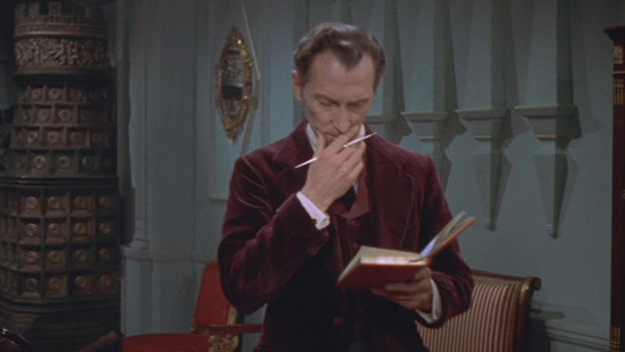
The Horror of Dracula
Downstairs, on the ground floor of the same hallway where the professor makes his plunge, there is, of all things, a window seat next to the door. Early in the film, when young Frankenstein meets his tutor, the seat has a large pink cushion, playing up the Hammer habit of using splashes of color against the frequent gray-green of its interior walls. Off to one side is a drawing room, decorated with red-and-white-striped chairs that suggest nothing so much as peppermint candy. Here the characters can swirl brandy in the glass and discuss what on earth Frankenstein thinks he’s up to so many floors above.
Robinson’s favorite of his Hammer films was Horror of Dracula (called simply Dracula in the U.K.). For one thing, though his bosses were no less budget-conscious than before, he had more money to work with, and spent wisely. Robinson said that while Frankenstein was bounded by wood—staircases, railings, the wooden struts and beams of the laboratory—he wanted Dracula to be all about stone, dirtied up, molded, and mossed-over as much as possible. The famous tracking shot that opens the picture sets the mood: first looking up at a time-worn, Romanov-like stone eagle, slowly moving to show a stone ledge, a wall with its masonry party exposed, past the massive (or so Robinson has made it seem) wood door, past twisted pillars, down stone steps and into Dracula’s crypt. Another thing that illustrates a stronger budget: the enormous fire in Dracula’s entrance hall, where Jonathan Harker warms his hands. There were fires in the drawing room chez Frankenstein, but you never actually see the flames, just the reflected light.
Eventually Harker is shown up to his room, and here is a favorite thing about Hammer’s unique look and feel: the unexpected coziness of certain rooms. Harker is staying with a 900-year-old undead vampire, but the upholstery is fresh and bright, the bed is enormous and inviting, there’s a charming desk near a window where Harker can scribble his thoughts about vampire-hunting. The room is high up and (again, more money) indeed Harker has a view. It’s all entirely delightful—right up to the moment when Dracula turns the key in the lock. Harker’s room, the last he will ever have in this life, isn’t nearly the most famous set in the film. But it is still my favorite Hammer example of what Robinson called “this contrapuntal thing of horrible things in beautiful places.”
The Curse of Frankenstein airs October 16 and Horror of Dracula October 24 on Turner Classic Movies.
Farran Smith Nehme writes about classic film on her blog, Self-Styled Siren, and recently published her first novel, Missing Reels. She is a member of the New York Film Critics Circle.



